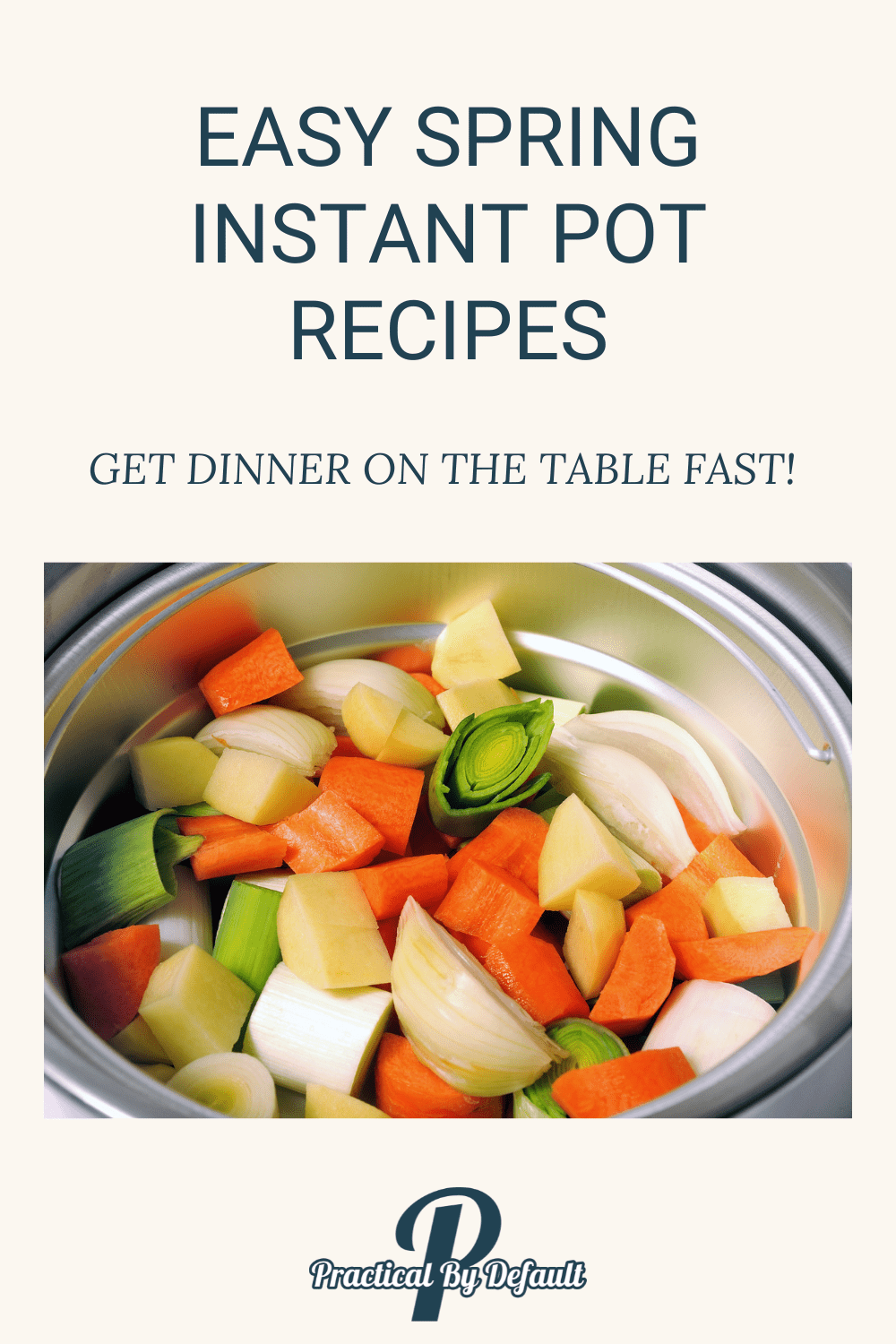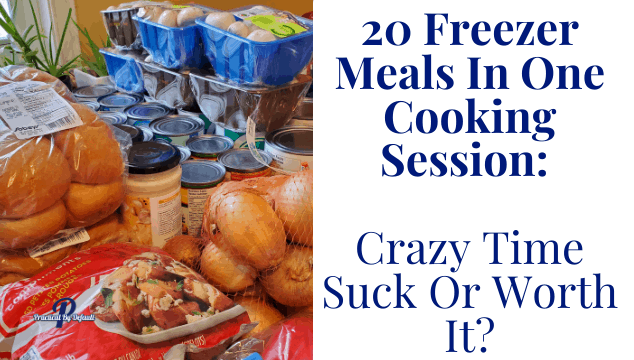How To Create A Kitchen Inventory Of Your Pantry, Freezer, & Fridge
Do you want to save money when feeding your family? Shop your own pantry, freezer, and fridge first! How do you do that? The fastest and easiest way to do this is to create a kitchen inventory.
If there is one thing that really pisses me off, it is when I have to throw out food. It is SUCH a waste!
Thankfully, this doesn’t happen very often anymore. Since I started meal planning, the amount of food we end up trashing each week is next to nothing.
I recently shared how I meal plan in 15 minutes each week. The first step of that system is creating an inventory of the food you already have on hand. While a quick organization of your kitchen cabinets is a great start, what you really need to do is a deeper kitchen inventory. Let’s find out why.
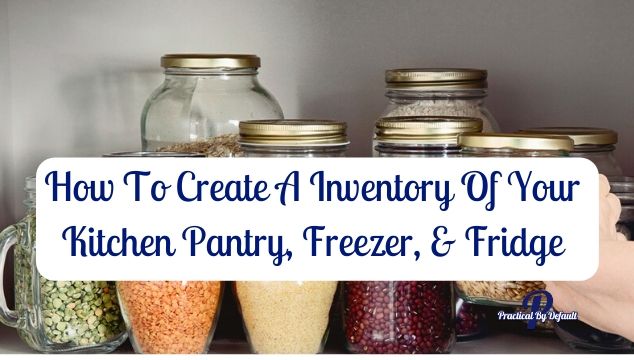
Disclosure: I may receive commissions for purchases made through links in this post.
Why You Need To Create A Food Inventory
If you think creating a detailed food inventory of your kitchen is a waste of time, think again!
Not only does it cut down on the amount of food you throw out, but it also saves you time and money.
Knowing what you have on hand is important when meal planning—trying a new recipe? Creating your weekly shopping list? A quick look at your inventory, and you know what items need to be used up soon, reducing waste and what ingredients you need to purchase for a new recipe.
An inventory also saves money because it will prevent you from picking up ingredients you already have on hand.
For example, I currently have three bottles of dried dill and one fresh package of dill. Why? My husband was trying a new dill sauce and forgot to check the inventory list. Lesson learned.
Knowing what you have in your kitchen will, in theory, help you keep it more organized. I say “in theory” because it seems I can clean up and organize my kitchen, and in one cooking session, it is destroyed.
That is the price of kids that cook, but I am totally willing to pay.
Food inventories are also useful in making sure you always have food on hand for emergencies, and for those times you are unable to get to the store. We get a lot of snowstorms, and knowing I have a meal or two on hand relieves stress.
A food inventory is essential when it comes to creating freezer meals for your family. You’ll need to make room in your freezer to store the meals, and it will cut down on waste.
Lastly, a kitchen inventory speeds up the whole meal planning process because you can do all your planning based on your inventory lists.
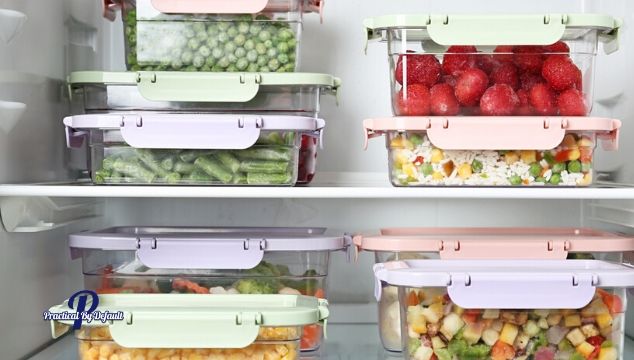
How To Create A Kitchen Inventory
Creating a kitchen inventory is easy. Basically, you want an itemized list of every food item in your house, including your pantry, cupboards, fridge, and freezer. You may also want an inventory list for household staples, such as toilet paper, facial tissue, and cleaning supplies.
Now, I will warn you that the first time you create a kitchen inventory, you will want to do it in one of two ways.
- Take a few hours and do it all at once OR
- Spread it out over a few days doing one section at a time (fridge one day, freezer the next)
It depends on how much time you have.
Once you do this the first time, you should not have to do it again IF you keep on top of it. I’ll show you how to do that efficiently below.
I like to kill two birds with one stone by cleaning and cataloging at the same time. Doing it this way does add time to the task, but it feels so good to get all the gunk out of the pantry, fridge, and freezer.
What Supplies You Need For A Kitchen Inventory
Besides time, you will want to grab a notebook and pen or a digital organizer like the Cozi app. I used the pages out of my meal planning planner (found in the Quick & Easy 4 Week Meal Plan Bundle) to create my kitchen inventory.
If you are cleaning your fridge, freezer, and cupboards, you will want a bucket or bowl of water, a washcloth, cleaner, and a towel.
And if you decide you’d like to organize while you are at it, you’ll want to have bins, baskets, jars, etc. to sort and store your items. I keep a basket for my pantry meal items, so my family members know not to eat those!
If you already have an organization system in place that is working, don’t try to fix it. But if it is not working, see how you can make improvements.
For example, if the bags of dried beans are hard to see because they are stored in a basket, try using glass mason jars that stack easily, and you can see inside.
And a trash can and/or green bin or a large bowl to toss gross and funky items you find buried in the back.
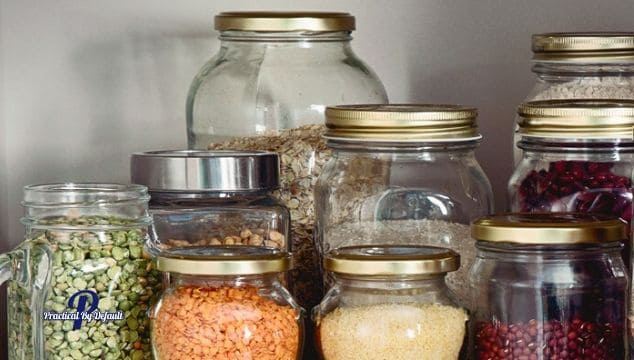
Creating A Pantry Inventory
Now that you have all your supplies, it is time to start. I like to start with my pantry inventory because I can chip away at it over time easier than I can when I do my freezer and fridge inventory.
For each item in your pantry, you will want to take note of:
- The name of the item (rice/canned tuna/ground beef, etc. )
- The expiry date for each item
- The amount of the item (1 500 g bag of rice/1 can of tuna/1 lb of ground beef, etc.)
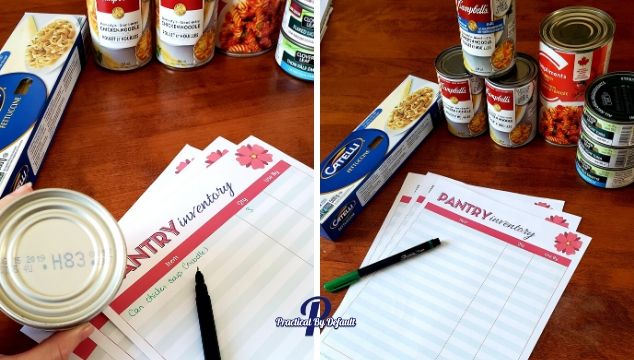
Note: If you have multiples of the same item, you should write down the use-by date or expiry date of the oldest item. The oldest one will get used first for my dill to reduce waste.
If you are cleaning and organizing as you go, the easiest way to do it is to empty it out completely. Remove all the items. Give the cupboard, fridge, freezer, or whatever a good scrub to remove the gunk and cat hair. (Don’t even ask me how cat hair gets in all the spaces-ick!)
While it dries, write your list. Be sure to toss anything expired even if it looks safe to use.
You may also want to create a donate pile for any food that you have multiples of that you know you won’t be able to use before they expire or that you are no longer able to eat. For example, if you are going gluten-free, be sure to pass on or donate gluten-filled items like pasta and flour.
Now, put everything back in neatly.
Tips For Creating Your Pantry Inventory:
I recommend getting the whole family involved. Depending on the age of your kids, there are a lot of tasks they can do, such as:
- removing items from the cupboard and pantry
- finding expiry dates and writing them down
- washing and scrubbing the area
- throwing out the expired items
- adding items to your donation box
- sorting and organizing (my daughter is a pro at this!)
- handing you items
Another tip is to do this right before you go grocery shopping when your pantry, fridge, and freezer are needing to be restocked.
Creating a Fridge Inventory
Keeping on top of my fridge inventory is always a struggle for me. My kids will often put empty containers back in the fridge or forget to write down on our shopping list what was used and needs to be replaced.
I complete a fridge inventory weekly, the day before we go shopping for groceries.
How to complete a fridge inventory:
- Start with the door and empty all items out
- Wash the door and shelves with soapy water
- While that dries, check the times you removed for decay and expiry dates
- Add items to your freezer inventory list along with expiry dates. Again, I used the pages out of my meal planning planner. (found in the Quick & Easy 4 Week Meal Plan Bundle)
- Restock and reorganize the doors
Repeat the above steps for the rest of the fridge. When cleaning my fridge (you can find a “how to clean your fridge” guide here) I like to work from the top down so that the dirt falls down and can easily be cleaned. Sometimes I need to soak the pull-out plastic drawers of my fridge and soak them to get the dirt off.
Creating a Freezer Inventory
I’ll admit, the only time I do a freezer inventory is when I do my freezer meal plan. That’s because I don’t store a lot of food in my freezer so a quick glance will usually tell me what is in it and what items we need to replace.
How to complete a freezer inventory:
- Remove all food items out of your freezer.
- Remove any dirt, clean wire baskets or shelves, and wipe the seal down well. (Follow this guide on deep cleaning your freezer if you feel it needs to be done.)
- Close the cover to keep the cold air in.
- Check frozen food for freezer burn, expired food, and broken seals.
- The food you can’t identify or looks funky or smells odd, you should toss.
- Take a marker and label what’s left if it is not labeled already.
- Write an itemized list of what is in your freezer along with expiration dates on your freezer inventory forms. I used the pages out of my meal planning planner. (found in the Quick & Easy 4 Week Meal Plan Bundle)
- Replace food in the freezer in an organized way.
A Tip On Kitchen Organization
Make sure you organize in a way that makes sense to you and how you cook. I like to keep spices we use daily on a lower shelf that is easy to reach and ones we use once in a while up higher.
My daughter has her own baking cupboard since she does most of the baking and loves cake decorating. She has a certain way she likes to keep things.
I have a cupboard for all my low-carb, sugar-free, gluten-free items as well.
This system may sound confusing and make zero sense to you. That’s ok! Do what works best for you and your home.
How To Use Your Kitchen Inventory Efficiently
Now that you have your full kitchen Inventory complete, your pantry inventory, freezer inventory, fridge inventory, and (if you are doing one) household staples inventory complete, it only takes a little bit of maintenance to use them effectively.
Keep the pages where your family will see them. As you use an item, update it. Don’t forget to update the expiry date if needed.
To keep your sheets from getting damaged, I slide them into plastic sheet protectors that pop right into my kitchen binder.
You could use a pencil or erasable pens to erase and update the sheets quickly. Or you could laminate them and use fine-tipped dry-erase markers.
You can also use magnets to attach them to your fridge or velcro dots to attach them inside your cupboards. As a result, they will be easily accessible to everyone in your family, but won’t take up space on your kitchen counter.
How To Create A Kitchen Inventory Of Your Pantry, Freezer, & Fridge
Completing a kitchen inventory takes time and effort. I’d rather do anything else but inventory my pantry, fridge, and freezer BUT it saves me so much time and money that it is worth doing.
Once you have it complete, stay on top of it using the tips above!
When meal planning, be sure to check your kitchen inventory to see what items are close to expiring and meal plan around those if possible to reduce waste.
A kitchen inventory is one of the ways I am able to meal plan each week in 15 minutes or less!
Take care,
Jen
PS. Meal planning saves time, money, and sanity. In order for this system to work for me, I needed a planner designed for the way I meal plan. I created the Practical Meal Planner – For Working Homeschool Moms to keep everything in one place. Check it out here.
📌Don’t let this post get lost in the internet abyss – pin it to your Pinterest board now!
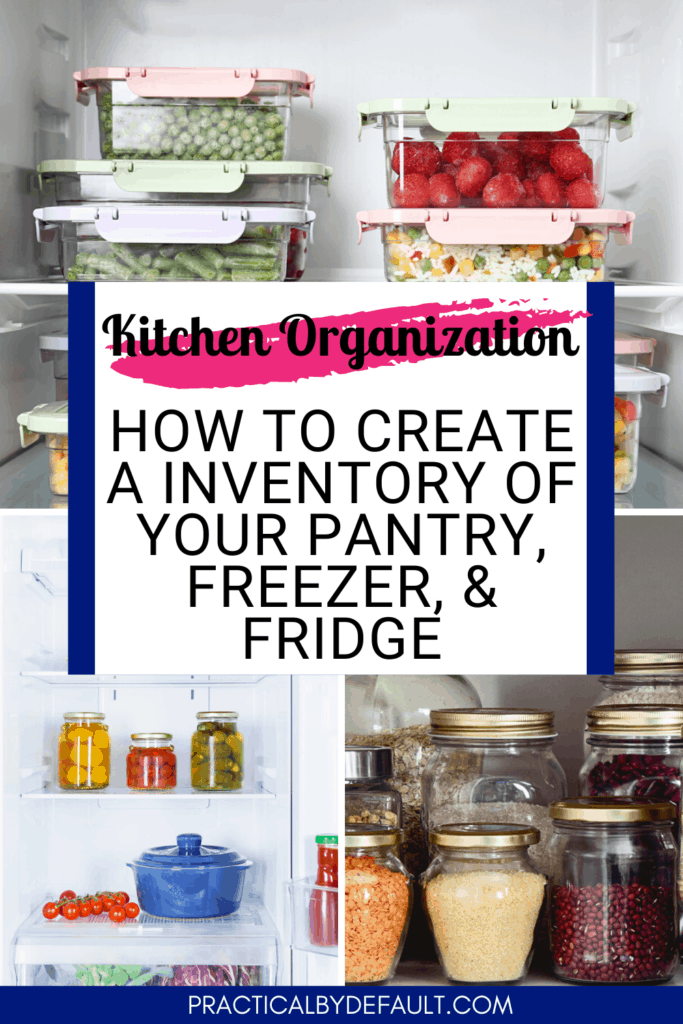

Hi, I’m Jen. I help working moms juggle their career and homeschool their kids by providing support, systems and tools. You are warmly invited to Join the Online Community Here!

